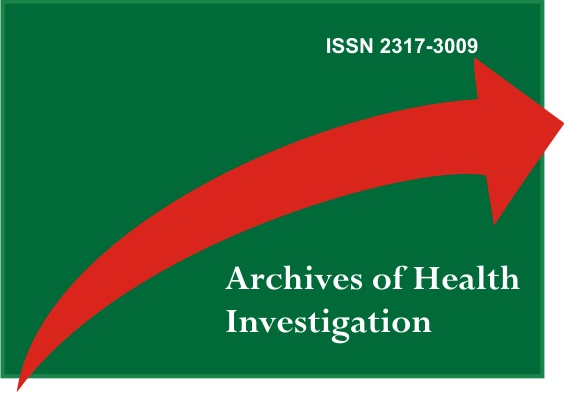Surgical-Orthodontic Approach of Impacted Canines: Case Series
DOI:
https://doi.org/10.21270/archi.v11i3.5404Keywords:
Tooth, Impacted, Tooth Movement, CuspidAbstract
The canine is an important dental element for maintaining a balanced and favorable esthetic occlusion, however there is a high prevalence of impaction, which can cause aesthetic and dispensable consequences to the patient. In case cases, orthodontic traction is an effective alternative that aims to redirect the eruption path and assist the eruptive strength of the unerupted tooth. Through the feasibility of the techniques proposed for the traction of unerupted teeth, one must understand the particularities of each one of them for the selection of the most appropriate and control of the unwanted effects. Based on the literature and comparing results of the applied surgical techniques, this article criteria different surgical-orthodontic managements for the traction of unerupted upper canine teeth.
Downloads
References
Cruz RM. Orthodontic traction of impacted canines: concepts and clinical application. Dental Press J Orthod. 2019;24(1):74-87.
Grybienè V, Juozènaitè D, Kubiliŋtè K. Diagnostic methods and treatment strategies of impacted maxillary canines: A literature review. Stomatologija. 2019;21(1):3-12.
Grisar K, Luyten J, Preda F, Martin C, Hoppenreijs T, Politis C et al. Interventions for impacted maxillary canines: A systematic review of the relationship between initial canine position and treatment outcome. Orthod Craniofac Res. 2021;24(2):180-93.
Becker, A, Chaushu, S. Etiology of maxillary canine impaction: a review. Am J Orthod Dentofacial Orthop. 2015;148:557-67.
Damante SC, Lopes WC, Rodrigues CDB, Adriazola MM, Bertoz AP de M, Bigliazzi R. Tracionamento de caninos inclusos: diagnóstico e terapêutica. Arch Health Invest. 2018;6(12):580-585.
Silva K, Santos D, Negrete D, Flaiban E, Bortolin R, Santos R. Tracionamento de caninos inclusos: revisão de literatura. Rev Odontol Univ Cid São Paulo. 2020;31(3):71-81.
Grisar K, Piccart F, Al-Rimawi AS, Basso I, Politis C, Jacobs R. Three-dimensional position of impacted maxillary canines: Prevalence, associated pathology and introduction to a new classification system. Clin Exp Dent Res. 2019;5(1):19-25.
Alves E, Montagner A, Antonizazzi S, Oliveira LF. Prevalência e posição de caninos superiores impactados e sua relação com reabsorção radicular. RFO UPF. 2014;19(2):180-84.
Parkin N, Benson PE, Thind B, Shah A, Khalil I, Ghafoor S. Open versus closed surgical exposure of canine teeth that are displaced in the roof of the mouth. Cochrane Database Syst Rev. 2017;21;8(8).
Mahardawi B, Kumar KC, Arunakul K, Chaiyasamut T, Wongsirichat N. Judgement in artificial eruption of embedded teeth from an oral surgery perspective: review article. J Korean Assoc Oral Maxillofac Surg. 2020;46(1):12-18.
Consolaro A, Consolaro RB, Francischone LA. Tracionamento ortodôntico: possíveis consequências nos caninos superiores e dentes adjacentes. Parte 3: anquilose alveolodentária, reabsorção dentária por substituição, metamorfose cálcica da polpa e necrose pulpar asséptica. Dental Press J Orthod. 2010;15(6):18-24.
Capelozza FL, Consolaro A, Cardoso MA, Siqueira DF. Perfuração do esmalte para o tracionamento de caninos: vantagens, desvantagens, descrição da técnica cirúrgica e biomecânica. Dental Press J Orthod. 2011;16(5):172-205.


